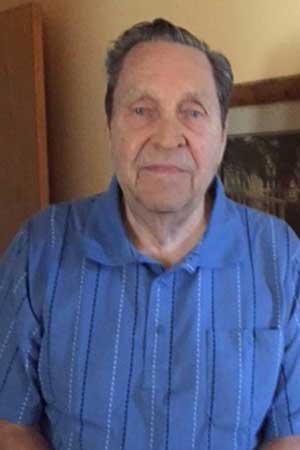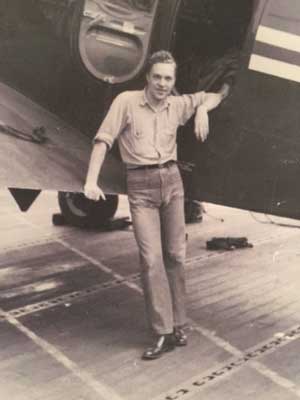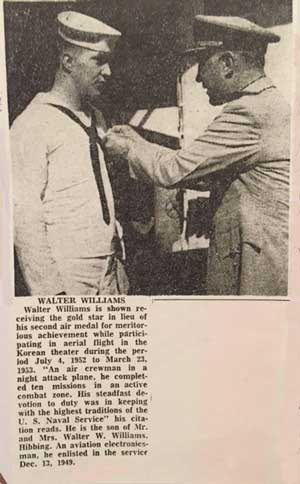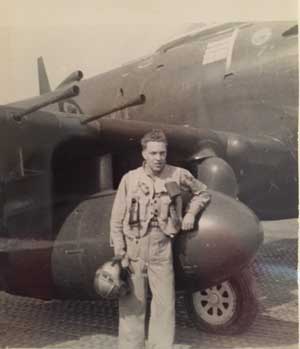U.S. Navy / Korean War
(Yorkville, Ill.) Entering the U.S. Navy carried on a family tradition for Walter Williams.
His grandfather, Old Salt, had told stories of his time on a sailing ship; other close relatives served in WWII. As a high school junior in Hibbing, Minn., Walter and a buddy joined the Minnesota National Guard. But when it came to a decision about signing up for the service in 1949, they chose the Navy. A cousin was a flyer for the Navy in WWII and influenced Walter to do the same.
His buddy, Donny Sanborn, remains a lasting memory for Walter. Their timing for joining up was influenced by arguments with their girlfriends. Donny eventually backed out after reconciliation, but did end up going over to Korea anyway after the Minnesota National Guard was nationalized and all members were automatically recruited.
Walter was on a carrier with clean white sheets while Donny fought in the muddy ground war. They continued to keep in touch until the day Walter had a letter returned marked with a profound “Deceased” stamped on it. He always felt if they had both joined the Navy as first planned, Donny would have survived.
Basic training at Great Lakes was followed by specialized electronics training near Memphis. At the beginning of the Korean War in 1951, most of his class was transferred to San Diego, where he prepared to be a combat air crewman for the historic Skyraider aircraft. This plane became the backbone of the US Navy during the war because of its weapons load and long flying time. As part of a special squadron aboard the USS Boxer, he was then transported to Korea.
Walter was based on this same ship for nine months and flew from there on his night missions. The pilot usually had two crew members who were in charge of radar and electronics. Once they were over land, they would shut off their radar so the North Koreans could not jam them. Then they would go into jamming mode themselves and try to tune in on the enemy’s radar so that they could create their own havoc.
Looking for targets of opportunity was a main goal. At night, headlights on the ground were blocked out except for a small slit, making it difficult to see moving targets from the air. All the railroad engines were coal fired, so the Skyraider would fly very low, under 3,000 feet, right above them. The fire box reflection would show up on the rails. The crew would see two lines of track that allowed an opportunity to target it. Several times his plane was hit by machine guns, one time losing oil pressure, but the pilot was able to make it to a US Air Force base in South Korea for repairs.
The USS Boxer was the sight of a devastating fire during Walter’s time aboard it. His plane just returned from a night flight along with others. Upon arrival, all guns, shells, and ammunition were routinely cleared out of the planes. A crewman was to reach in and check to be sure all were removed. He would call out “Clear” and the pilot would slam the bolt home.
One of the planes down in the hanger deck had a shell remaining, and when it hit the fuel tank of the plane in front of it, the resulting explosion caused a huge fire. Crew members were forced to jump overboard because they were on the edge of the ship and had to escape the inferno. Sadly, nine crewmen died in the initial blast. The ship was fully loaded, so all bombs had to be rolled off the edge of the listing ship. Eventually, repairs were made near Tokyo.
Another harrowing experience occurred on a dark night with no stars or moon. The pilot thought he saw a light below and called out to Walter, “Willie, hang on!” When making erratic maneuvers, there was a gyro used to keep the plane level that needed to be locked before diving. The pilot dove and forgot to secure the gyro, so when he pulled back up, the gyro tumbled and he couldn’t tell up from down and only saw black.
He was all over the sky.
Walter called to Don, the pilot, to ask what was going on and twice got no answer. Knowing escape was necessary, he pulled the red handle on the door, and saw it fly off. While unbuckling, Walter finally heard a welcome “Willie, hang on!” Two seconds later he would have been out the door to an unknown future in North Korea. Thankfully, the pilot somehow found his bearings and got them back to the ship, absent the door.
In 1952, Walter was planning to return to Hibbing for Christmas. His girlfriend, Mary Jane, wrote she would be in Bremerton, Wash. with friends and suggested he come there. Within a few days after his arrival, he and Mary Jane were married!
In 1953, after more training in San Diego, Walter left once again for Korea on the USS Princeton, but his second stint was cut short after the armistice signing on July 27. After returning to San Diego, he was discharged in November.
He and Mary Jane returned to Hibbing, where he was hired by Greyhound Bus Lines; Greyhound got its start in Hibbing providing transportation to the workers in the iron mines. After some schooling, he settled in Chicago and then on to Yorkville, where he lives today leading an active life, including a part-time job. His daughter and two sons live nearby. After 59 years of marriage, Mary Jane died in 2012.
Walter deservedly received awards and gold stars for his meritorious achievement while participating in aerial flight missions in an active combat zone.
Thank you, Walter, for your devoted service, and we wish you well on your Honor Flight Chicago adventure.






